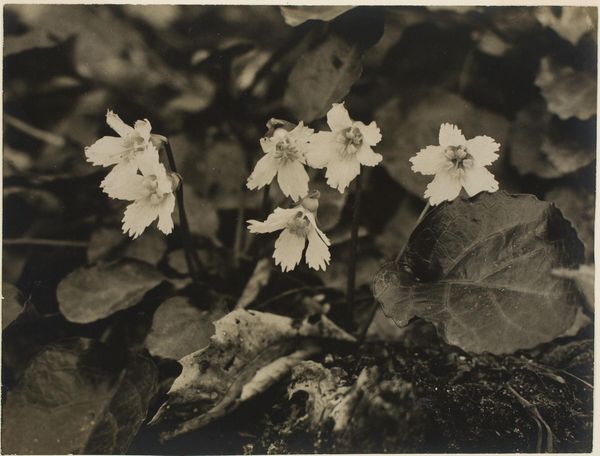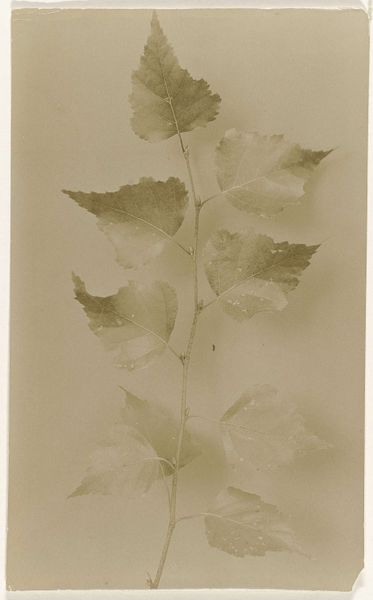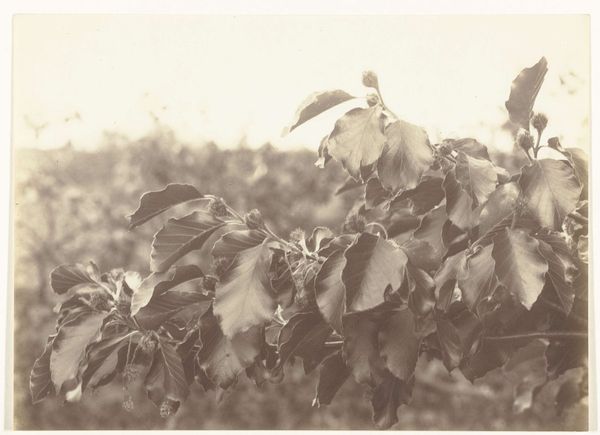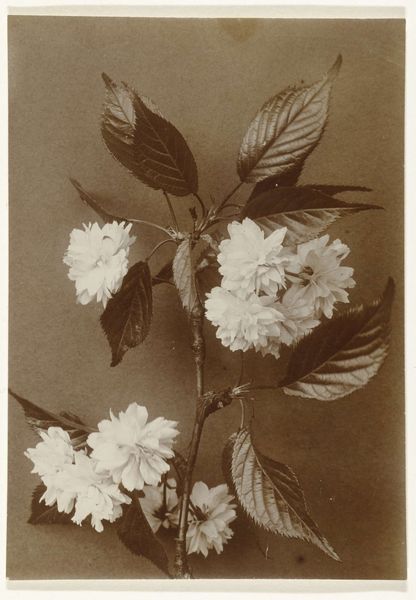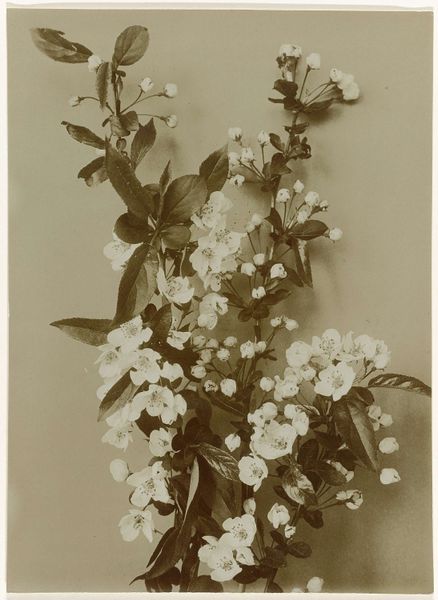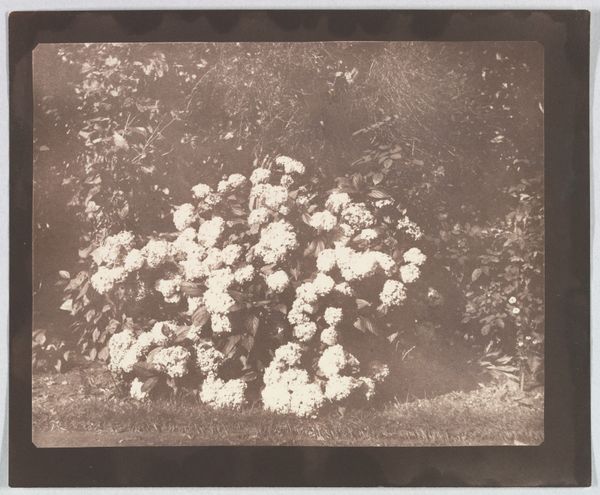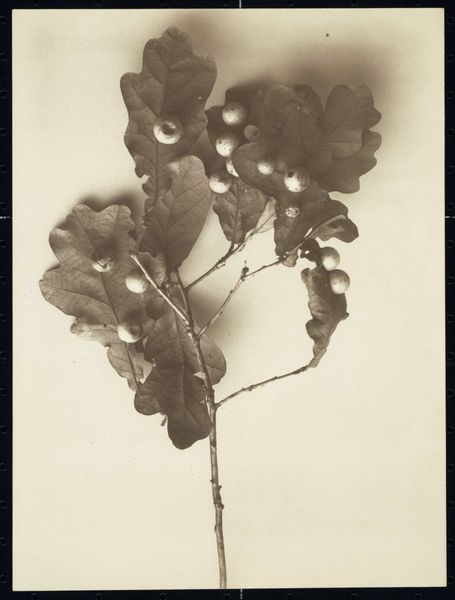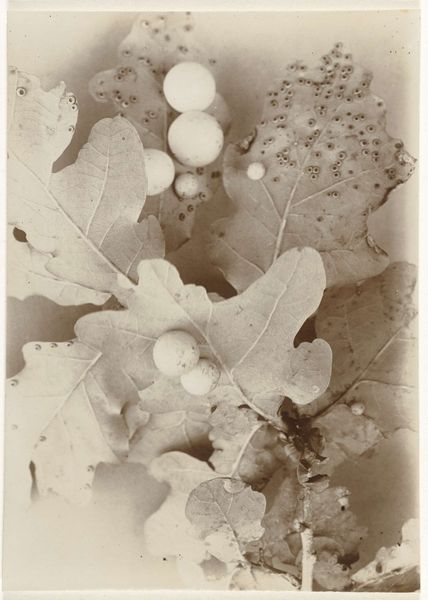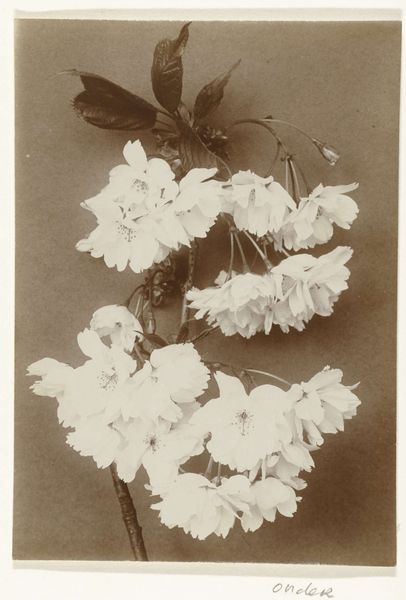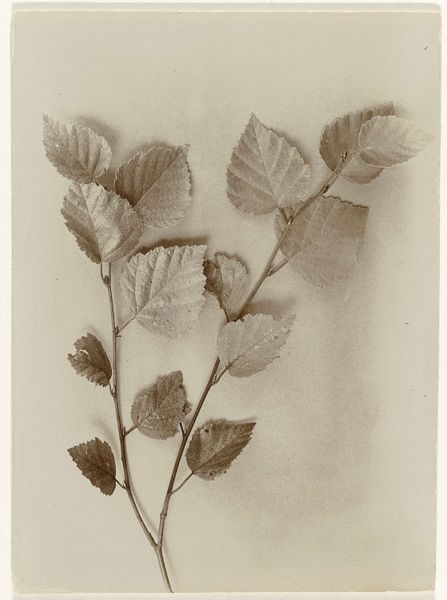
Dimensions: height 167 mm, width 225 mm
Copyright: Rijks Museum: Open Domain
Curator: Here we have a photograph, likely taken between 1900 and 1930, called "Haagwinde in bloei." The photographer is Richard Tepe, and the image is held in the Rijksmuseum. What are your initial impressions? Editor: A dream! Or a half-forgotten memory rendered in sepia tones. The profusion of leaves around the flowers creates such a thicket of detail that my eye kind of gets lost… it all melts into a lovely monochrome, don't you think? Curator: It's fascinating, isn't it, how Tepe manipulates a technology meant for pure documentation to instead create a rather impressionistic effect, wouldn’t you say? Photography during this period was beginning to ask itself questions about fine art, moving from capturing information to capturing…mood. It makes me wonder about the social context. Editor: I agree, and it does invite pondering the labor of early photographic processes. Preparing the chemicals, the careful arrangement of the subject matter, and then that long exposure! It's a material intensive undertaking—the labor feels embodied. Also, look at the soft focus; it's intentional. And those humble flowers transformed through process into an artwork meant to hang in a museum. Is this supposed to give a status to commonness or challenge preconceived notions of “low” subjects worthy of attention and work? Curator: Definitely, there's a revaluing happening here. The ordinary made precious through craft, and framed within an artistic movement which favored perception above all else. Do you see any relationship with Japanese aesthetics here? Editor: Oh, absolutely! The focus on ephemeral beauty. That ability to pull significance out of nature so humble. Perhaps he viewed them in fields along train lines? Factories springing up that once harbored pastoral views? Perhaps to emphasize both beauty and impending changes, he selected morning glories. What could symbolize the daily struggle more poignantly than these morning glories that emerge, open up, greet you only to wilt by midday? Curator: I hadn't considered that perspective...it is true they exist between industrialism and nature’s indifference, both fighting to persist in changing and altered conditions. It gives a renewed sense of urgency to what I thought to be, up to now, only aesthetic concern! Editor: It makes me ponder on its historical audience, and how their perceptions differed from ours. Curator: It really does provide such depth that I find quite staggering, particularly in its relative simplicity. Thank you! Editor: Of course, always glad to shed light and explore a process.
Comments
No comments
Be the first to comment and join the conversation on the ultimate creative platform.

